Sausage making 101: How to make Pork and Coriander Sausages
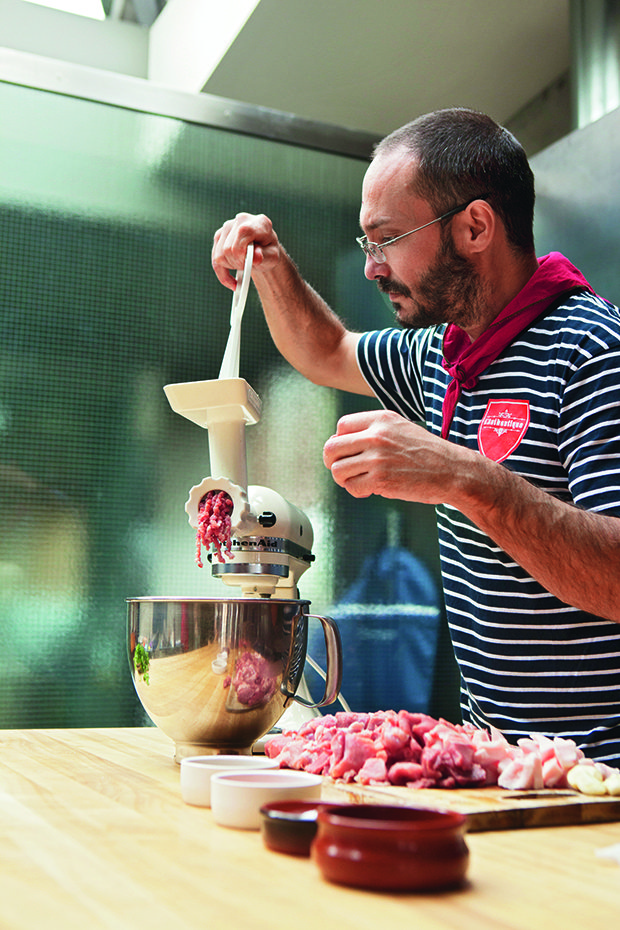
Homemade sausages will give you and your cooking credentials the wow-factor, as well as add plenty of savoire fair to your barbecue fare.
Recipe: Philippe Arregui
Philippe Arregui, the charcutier at artisan sausage producer, L’Authentique, shows you how it’s done.
He says it takes a little practice to master the art and, during your first attempt, suggests having a helper on standby to lend a hand and secure the casing as the meat is fed into it. Philippe also shares his recipe for Pork & Coriander Sausages, one of his favourites.
“Coriander is not a traditional French flavour but since coming to New Zealand, I’ve opened up my palate to Asian food, and I really enjoy this flavour in sausages,” says Philippe. The recipe contains a splash of beer to help the sausages caramelise; to make it gluten-free substitute beer for white wine.
Philippe’s Pork & Coriander Sausages
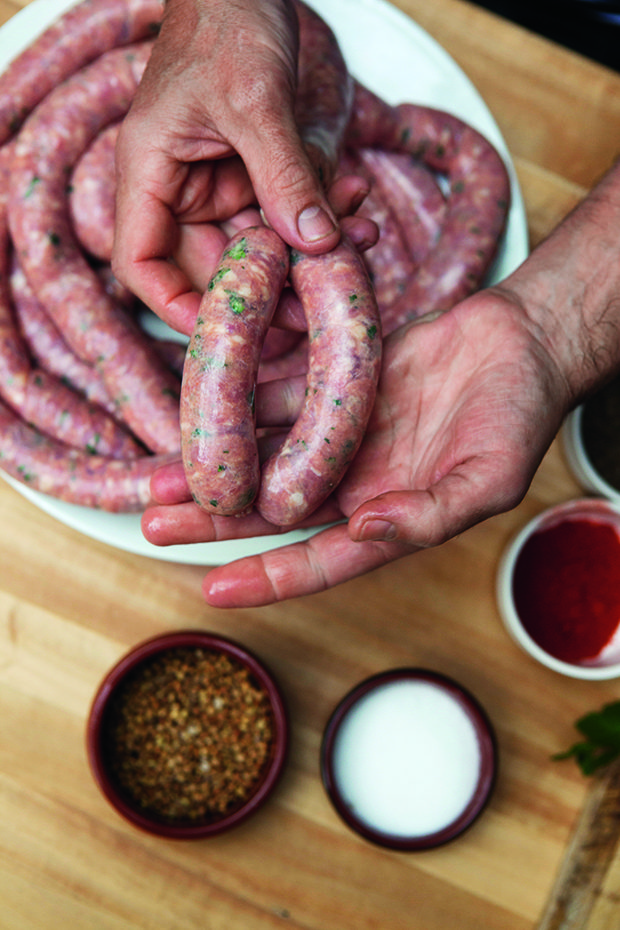
Makes: 24 sausages
The sausage must have a 20 percent ratio of fat to meat. We’ve used Scotch fillet as it’s a lean meat and natural hog casings (30-34mm width from The Casing Boutique, thecasingboutique.co.nz).
WHAT YOU NEED
KitchenAid or food processor, with meat grinder and sausage-stuffer attachment
INGREDIENTS
1.8kg Scotch pork fillet
200g fat trim (such as back fat, ask your butcher)
100ml Hallertau beer or a craft beer (or white wine)
4g coriander seeds
4g cumin
24g of salt
4g garlic cloves, crushed
Handful of fresh coriander, chopped
Splash of water
METHOD
Step 1: Trim and discard any hard fat and nerves from the meat. Cut meat into small cubes (about 2cm).
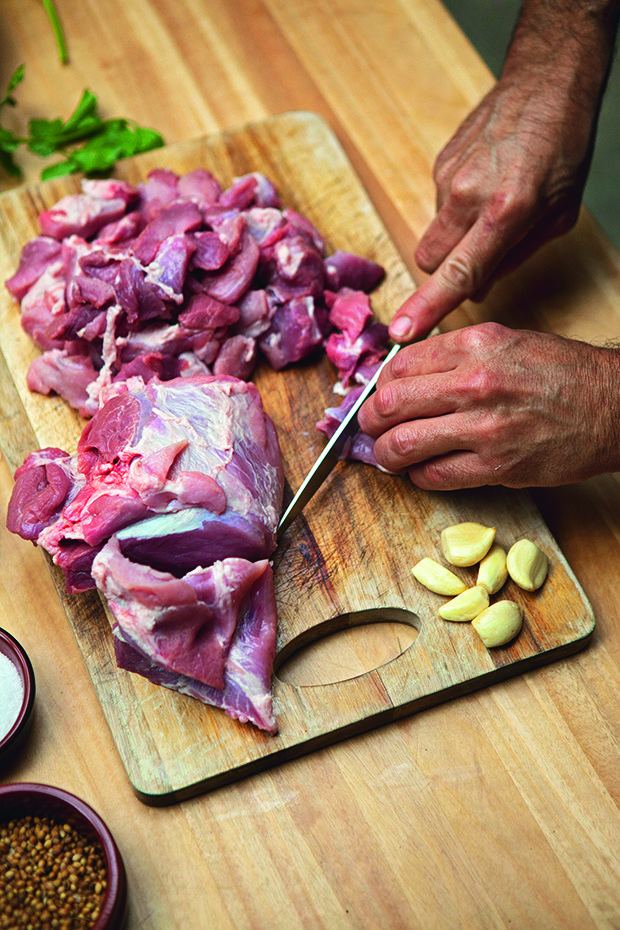
Step 2: Set the sausage grinder on coarse grind (we used a KitchenAid with food grinder attachment). Gradually feed meat into the grinder, combining it with pieces of fat to achieve an even blend of meat and fat.
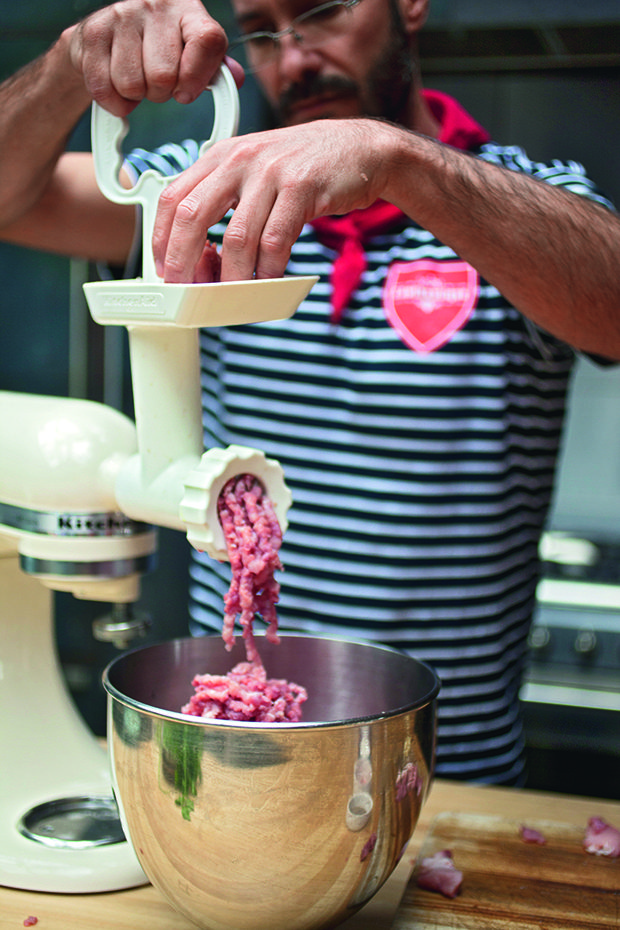
Step 3: Prepare the seasoning by combining salt and spices in a coffee grinder or mortar and pestle. Add fresh coriander and garlic to the spice mix. Combine with the ground meat and add beer and a splash of water to help blend the spices.
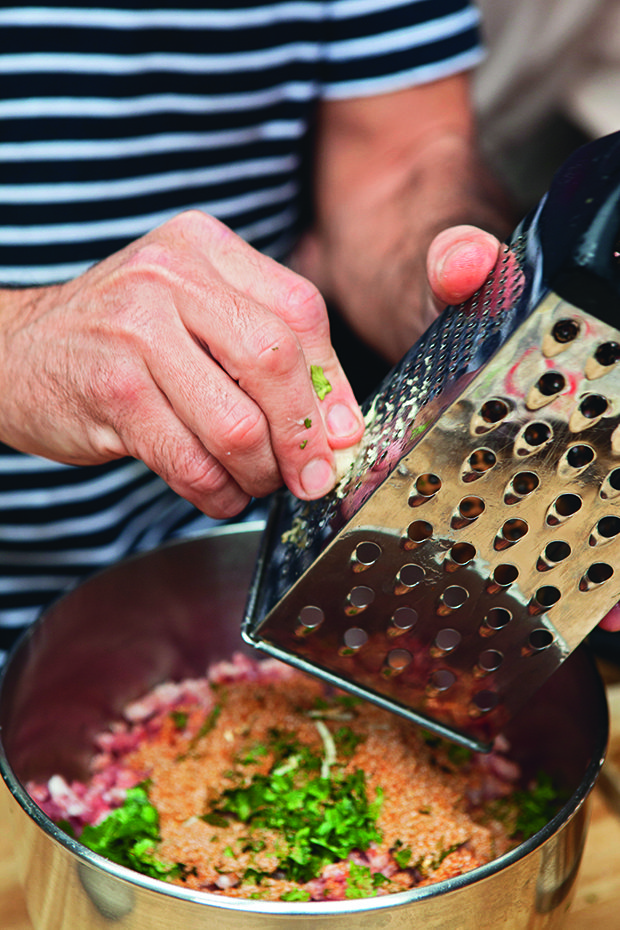
Step 4: Thoroughly mix the meat and spices by hand in a large bowl (about 5 minutes). At L’Authentique, the raw pork meat is tasted during blending to check flavour (not usually advised by health authorities). “It’s the French way and I think it’s fine to eat the raw meat,” says Philippe.
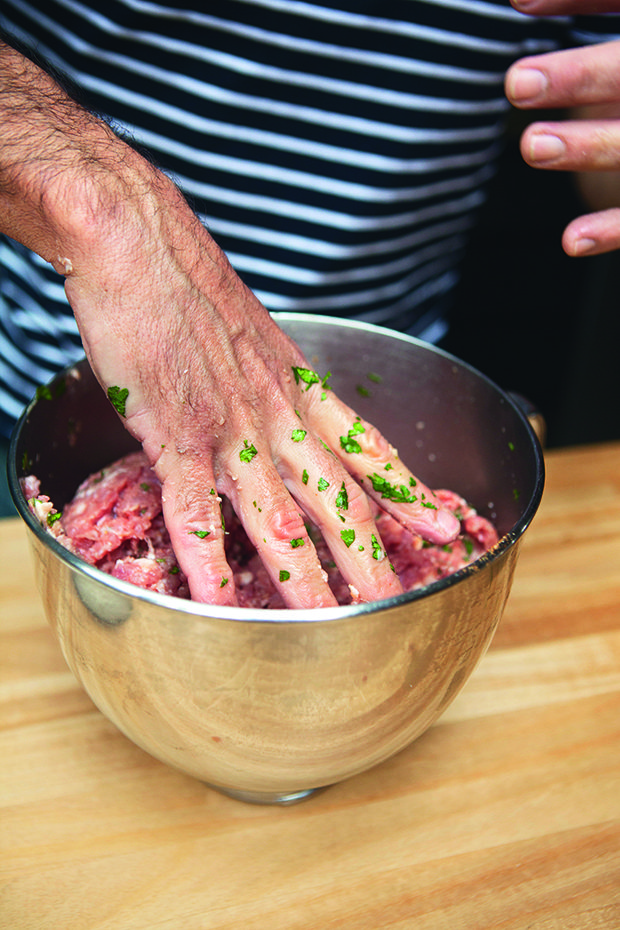
Step 5: Fix sausage-stuffer attachment and casing to the tube. Place meat mix in the top.
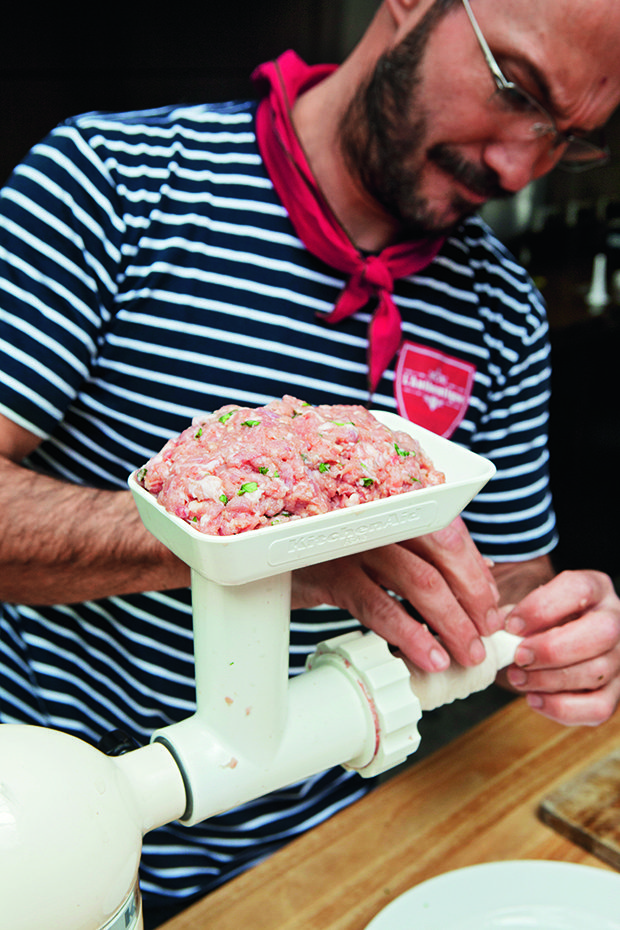
Step 6: Keep a firm hand on the casing as it fills with meat.
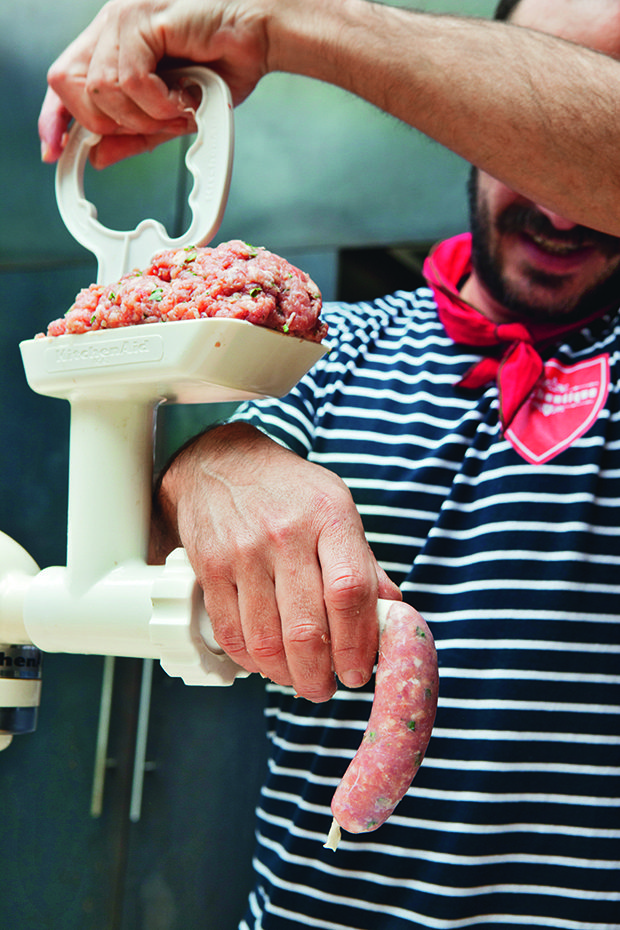
Step 7: Pinch the casing every 7cm to make a break to later create links in the sausages.
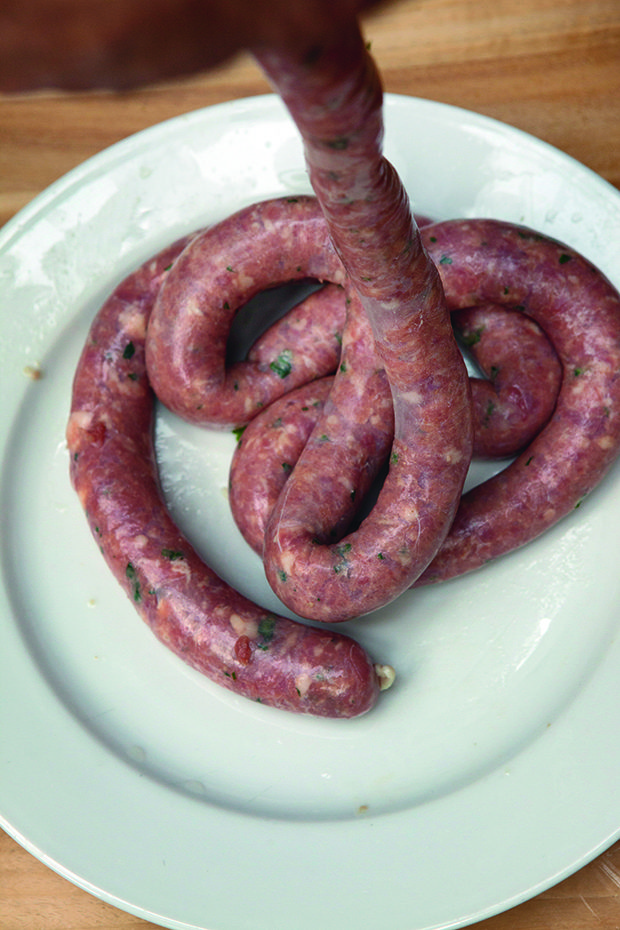
Step 8: When all the meat is fed into the casing, turn off the machine and tie a secure knot in the casing.
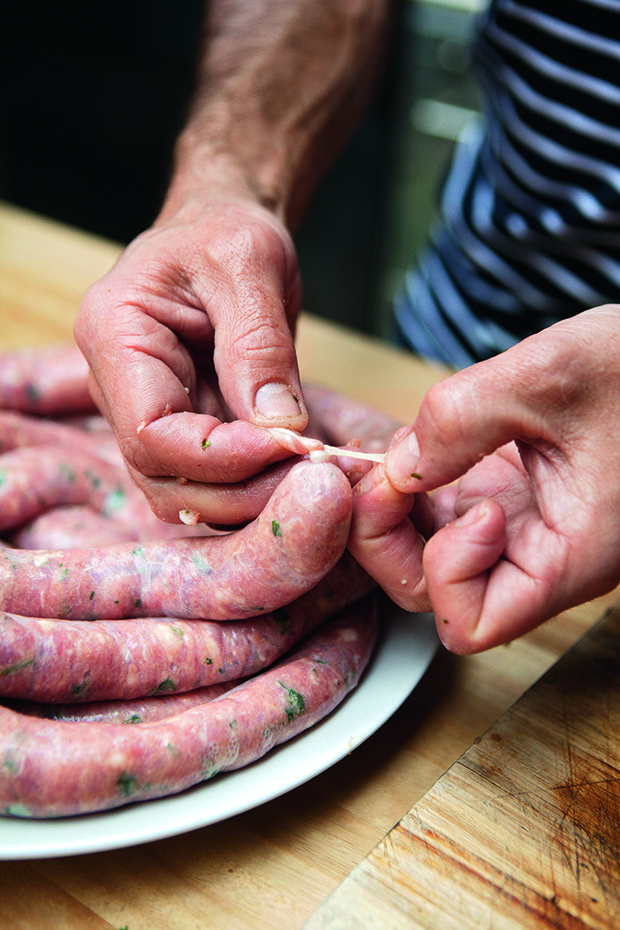
Step 9: Link sausages by twisting at the 7cm mark.

Step 10: Sausages can be cooked fresh but it’s best to wait a day to let the flavours develop. Hang the sausages or refrigerate for one day wrapped in muslin in a metal colander on a plate to catch any excess water.
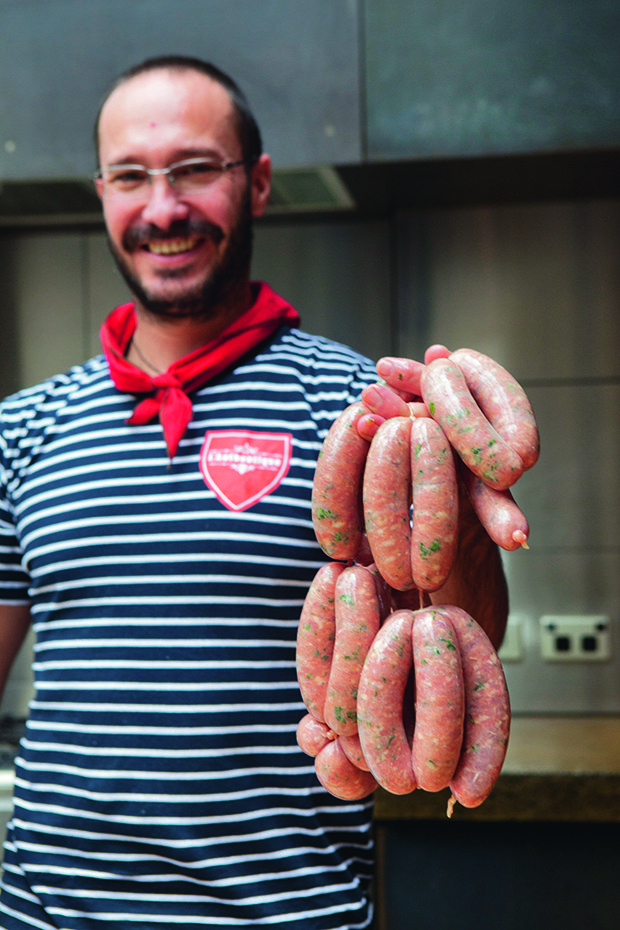
FREEZE IT
This recipe makes a lot of sausages and any extras can be frozen for up to three months.
REAL DEAL
Keep it authentic and choose natural casings over synthetic. Casings come in 20-metre lengths and this recipe will result in leftover casing. To use all the casing, increase the volume of meat mix and herbs.

